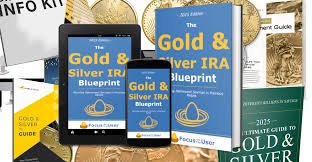In today’s fast-paced business environment, integrating tools like Salesforce and HubSpot is more than just a convenience—it’s a necessity. By combining the strengths of these two platforms, businesses can streamline operations, enhance customer relationships, and ultimately drive more revenue. This guide will walk you through the benefits, setup process, and best practices for integrating Salesforce with HubSpot.
Why Integrate Salesforce with HubSpot?
- Unified Data Management: Integrating Salesforce with HubSpot allows you to unify your customer data across both platforms. This means that information gathered by your sales team in Salesforce can be seamlessly shared with your marketing team in HubSpot, ensuring consistency in customer communication. With a centralized data repository, you can eliminate the silos that often exist between sales and marketing teams.
- Improved Lead Management: When Salesforce and HubSpot are integrated, lead management becomes a breeze. Leads captured through HubSpot’s marketing campaigns can be automatically synced with Salesforce, allowing your sales team to follow up quickly. The integration also ensures that lead data is updated in real-time, reducing the chances of duplicate records or outdated information.
- Enhanced Reporting and Analytics: The integration of Salesforce with HubSpot enables more comprehensive reporting and analytics. You can track the entire customer journey, from the first marketing interaction in HubSpot to the final sale in Salesforce. This holistic view allows for better decision-making and more accurate forecasting.
- Streamlined Communication: Salesforce and HubSpot integration ensures that your sales and marketing teams are always on the same page. Marketing can pass on qualified leads to sales with all the necessary context, and sales can provide feedback on the quality of leads received. This collaboration helps to improve the overall customer experience.
How to Integrate Salesforce with HubSpot
Integrating Salesforce with HubSpot might seem daunting, but with the right approach, it can be a straightforward process. Here’s a step-by-step guide to help you get started:
Prepare Your Systems Before initiating the integration, ensure that both your Salesforce and HubSpot accounts are properly set up and configured. Verify that your Salesforce instance is compatible with HubSpot’s integration capabilities and that you have the necessary permissions to perform the integration.
Install the HubSpot Integration Log in to your HubSpot account and navigate to the marketplace. Search for the Salesforce integration and install it. You will be prompted to enter your Salesforce credentials to authorize the connection. Once authorized, HubSpot will begin syncing with Salesforce.
Customize Your Data Sync After the initial setup, you’ll need to configure the data sync between Salesforce and HubSpot. Decide which records you want to sync (e.g., contacts, leads, deals) and how you want them to be mapped between the two systems. HubSpot provides customization options that allow you to sync data based on specific criteria, such as lead status or deal stage.
Set Up Workflows and Automation One of the key benefits of integrating Salesforce with HubSpot is the ability to automate tasks and workflows. For example, you can set up an automation to create a task in Salesforce when a lead reaches a certain score in HubSpot. This ensures that your sales team is notified as soon as a lead becomes hot.
Test the Integration Before rolling out the integration to your entire team, it’s important to test it thoroughly. Create a few test records in HubSpot and verify that they sync correctly with Salesforce. Check for any errors or discrepancies in the data sync and make adjustments as needed.
Best Practices for Salesforce and HubSpot Integration
To get the most out of your Salesforce and HubSpot integration, consider the following best practices:
- Regularly Monitor the Sync Process: It’s essential to keep an eye on the sync process to ensure that data is flowing smoothly between Salesforce and HubSpot. Regularly check for sync errors and address them promptly to avoid data inconsistencies.
- Keep Your Teams Informed: Make sure that both your sales and marketing teams are aware of the integration and how it impacts their daily workflows. Provide training sessions to help them understand how to leverage the integration effectively.
- Leverage the Power of Automation: Take full advantage of the automation capabilities that the integration offers. Set up workflows that automatically move leads through the sales funnel, trigger follow-up emails, or update records based on specific actions.
- Customize Your Integration: Every business is unique, and so are its needs. Customize your Salesforce-HubSpot integration to align with your specific business processes. This might involve creating custom fields, mapping data differently, or setting up unique workflows.
- Regularly Review and Optimize: As your business grows, your needs may change. Regularly review your Salesforce and HubSpot integration to ensure that it’s still meeting your objectives. Make adjustments as necessary to optimize the integration for maximum efficiency.
Conclusion
Integrating Salesforce with HubSpot is a powerful way to bridge the gap between your sales and marketing teams. With unified data, improved lead management, and enhanced reporting, your business can achieve greater efficiency and drive better results. By following the steps outlined in this guide and adhering to best practices, you can ensure a smooth and successful integration that delivers long-term value to your organization.

